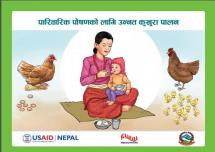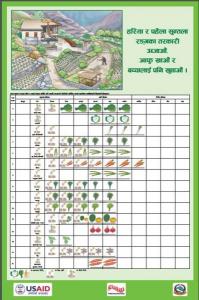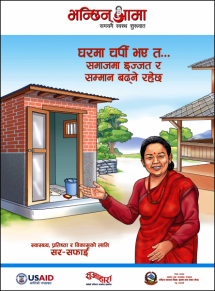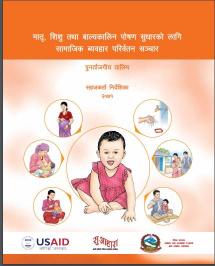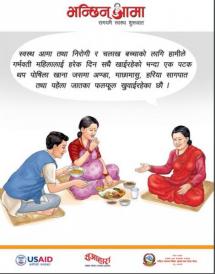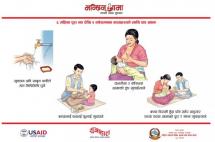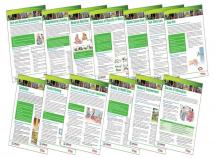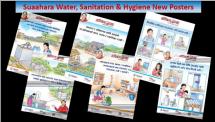Suaahara Home Stead Food Production (HFP) Poultry Flip Chart
Suaahara was a five year (2011-2016) project funded by USAID aimed to improve the nutritional status of women and children in 41 districts of Nepal. The project focused on improving health and nutrition behaviors at the household level through promotion of Essential Nutrition and Hygiene Actions (EN/HA), particularly Maternal, Infant and Young Child Nutrition (MIYCN), and addressing other determinants of under-nutrition, such as availability of and access to food, hygiene, quality of health care, child spacing and socio-cultural factors including gender and marginalization.
Suaahara was implemented by a consortium of partner organizations led by Save the Children.
The SBCC strategy established an internal quality materials review and production system to ensure that all partners in the consortium had mutually reinforcing, quality materials developed, pretested, produced and disseminated to the end user.
In the year 2013, Suaahara developed this Home Stead Food Production (HFP) related Poultry Flipchart with key messages on “Poultry for Family Nutrition”. The flipchart focuses on poultry system, management of intensive coops, strategy of brooding systems, chicken diseases and immunization etc. The main objective of this flip chart to improve household poultry rearing practices so that egg and meat production and consumption will be increased.
Source: Johns Hopkins Bloomberg School of Public Health/ Center for Communication Programs
Date of Publication: March 25, 2019
SIMILIAR RESOURCES
Tools
Examples
- Suaahara Training Guidelines and Participant Handbooks
- Community Communication MNCH e-Manual: Participatory Health Promotion Sessions
- GESI Toolkit
- Family Planning Counselling Kit
- The Infection Control Symbol Package
- Suaahara Health Facility Operation and Management Committee Capacity Building Training and Operation Guidelines
- Promoting Quality Malaria Medicine through Social and Behavior Change Communication
- The Future of Malaria Social and Behavior Change Communication
- SBCC for Malaria in Pregnancy: Strategy Development Guidance
- Maternal Newborn Child Health - Nutrition Quality Improvement Tools

